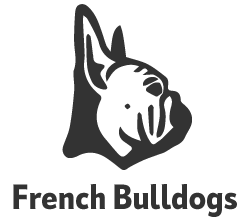In recent years dogs with short noses (brachycephalic) have become increasingly popular. Although several brachcephalic breeds, such as the Bulldog, were initially selected for use in fighting, today they are more commonly seen as a popular companion animal. This may be explained by the fact that a short nose makes a dog look more human-like, with large, round, wide set eyes and rounded faces thought to be instinctively attractive to humans. These juvenile facial features are a form of paedomorphism, whereby juvenile morphological features are retained in adult animals; which in the case of the dog has been driven by artificial selection for these traits in closed breeding populations.
Selection for a brachycephalic head shape to satisfy our human preferences has come at a cost for the dogs concerned who can suffer from restricted breathing. The signs of this are shortness of breath, snoring, wheezing, gagging, regurgitation, and exercise intolerance. BOAS may not be fully evident in young puppies, but clear signs may be seen as the puppies develop into adult dogs.
Anatomical abnormalities seen in many of these breeds are believed to be directly related to their skull conformation (shape).
This happens because the soft tissue in the mouth and larynx is crammed into the reduced skeletal space. The soft tissue partially blocks the larynx and restricts the passage of air. In addition, the nostrils of brachycephalic dogs are narrowed (stenotic nares) due to lack of development. These abnormalities encourage complete collapse of the airways (laryngeal collapse). Clinical signs are often progressive, with dogs often deteriorating over time. Prognosis also worsens with time, as the later stages of laryngeal collapse are very difficult to surgically improve – in some cases necessitating permanent tracheostomy. The dog is struggling to breathe and therefore cannot enjoy some of the ordinary doggy pleasures such as play or healthy walks.

Too long soft palate

BOS mouth of a French Bulldog
These physical abnormalities also affect dogs’ ability to regulate body temperature making them uncomfortable and breathless in warm weather. They struggle to effectively cool down and often seek cool surfaces to lie on. They will also adopt a splayed-out, stretched neck posture to aid them in cooling and breathing. Dogs are unable to sweat but pant instead to cool down. Normal dogs have a large surface area within the nose, which contains an array of delicate turbinates. Inhaled air passes through these moist structures and cooling occurs via the same principle as sweating in humans by generating ‘evaporation cold’, thus removing heat from the body. In brachycephalic dogs, however, the nasal conchae are too small and air can barely pass through them. This results in severely impaired thermoregulation. For this reason, brachycephalic dogs are particularly sensitive to warm temperatures and often require many hours to recover from exercise.
A recent study carried out by the Royal Veterinary College has found that owners are able to report the clinical signs of BOAS in their dogs, but do not perceive these signs as indicative of a breathing ‘problem’. They may even regard snoring, wheezing and excessive panting as ‘cute’. A common comment is, ‘But that’s normal for a …. (Pug, Bulldog, Pekingese, Boston, Frenchie, Chin, etc)’, an attitude which may mean that many brachycephalic dogs are experiencing chronic negative effects on their welfare and are not getting the appropriate veterinary treatment. The phrase ‘normal for the breed’ indicates a culture of acceptance of certain problems in certain types of dog and constrains the improvement of dog welfare.
Diagnosis of BOAS by physical examination requires an anaesthetic and then surgical resection of the soft palate and reshaping of the nostrils. Anaesthesia itself is high risk in brachycephalic breeds and these procedures are invasive and expensive. Although this risky, expensive surgery can greatly improve the quality of life of animals already suffering from this disorder, in the long-term it is vital that breeders are conscientious in their efforts to eliminate this disorder from their breeding population, so that its prevalence is reduced and no dog is born ‘requiring’ invasive surgery to allow it to live a reasonable quality of life.
You have BOS from light to very heavy cases! click here for the terrible story of our Tétisz…

BOS dog before and after the operation

BOS operation before and after
There are undoubtedly serious welfare issues associated with BOAS and there needs to be greater awareness of the impact of certain ‘fashionable’ or popular physical traits on the quality of life of an individual dog. It is important that informed decisions are made when choosing a breed and encouragement given to select a dog based on health rather than appearance.
Some breed standards (the Kennel Club’s written description of a breed) inherently put dogs at risk of BOAS due to their descriptions of extreme skull morphologies as highly desirable , and it is up to breeders, their clubs and the Kennel Club to address this.
Consider this before choosing a brachycephalic dog:
BOAS has potentially severe welfare implications for large numbers of dogs. It will do so generation after generation unless dogs selected for breeding have less extreme physical features.
BOAS can have severe adverse effects on an individual dog’s quality of life.
The effects can be of long duration, affecting a dog throughout its life.
Potential dog owners who choose a brachycephalic breed are contributing to this welfare problem.
Potential dog owners who insist on a less extreme type of conformation for their pet will be helping to restore a dog breed to its earlier type.
Practical tips
When inquiring with breeders about puppies, asking questions regarding BOAS in their dogs and kennel will help ensure that this disorder is not simply ‘swept under the carpet’ and dismissed as normal
Looking out for known clinical signs such as snorting, snorting and wheezing – and subsequently only purchasing dogs that are free of these signs (and checking that their parents are too) will increase the demand for healthier dogs; placing pressure upon breeders to improve their breeding practices in line with animal welfare
Familiarising yourself with the appearance of the singular external BOAS abnormality, narrowed nostrils, will allow you to selectively choose healthier dogs

